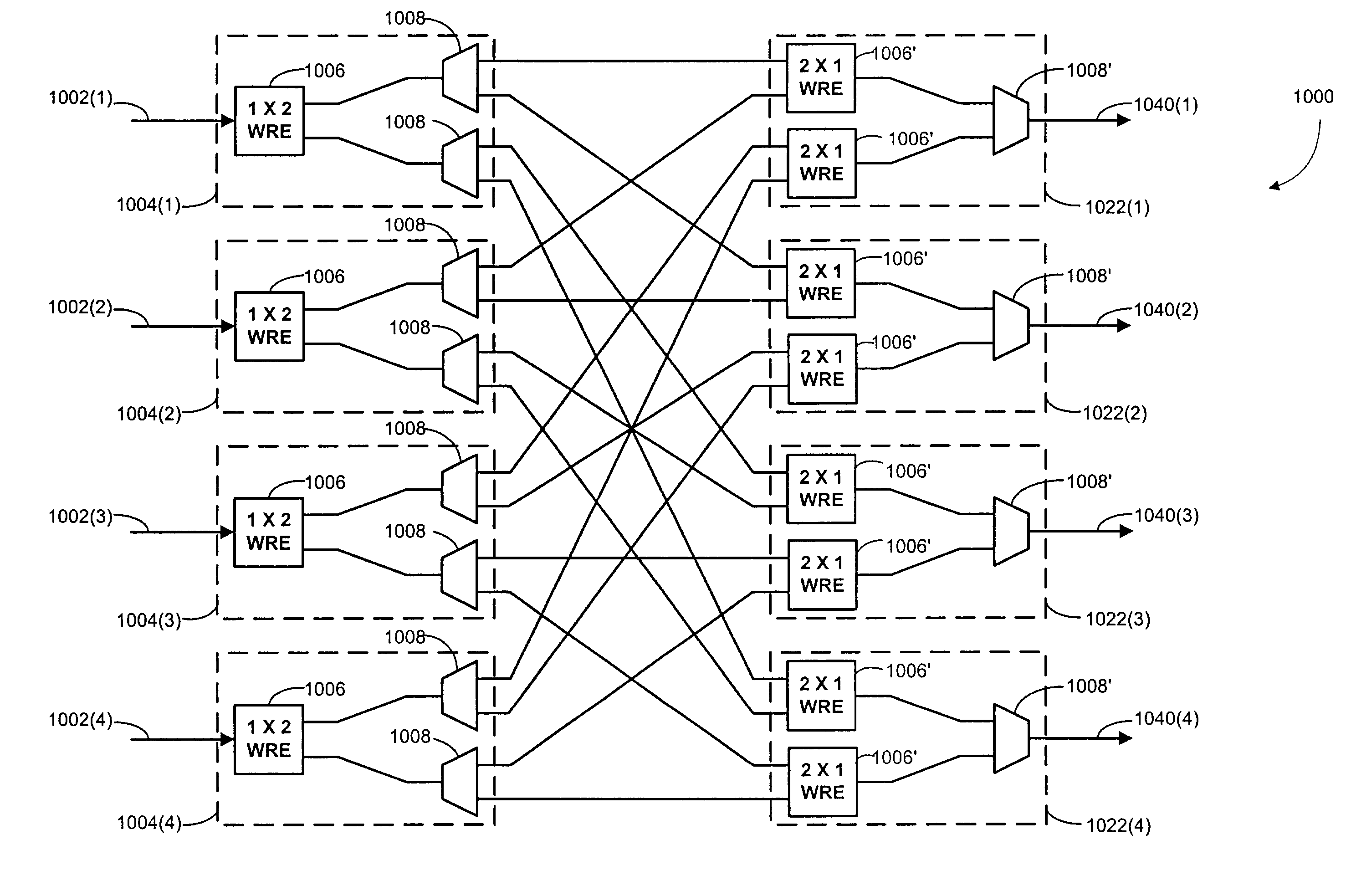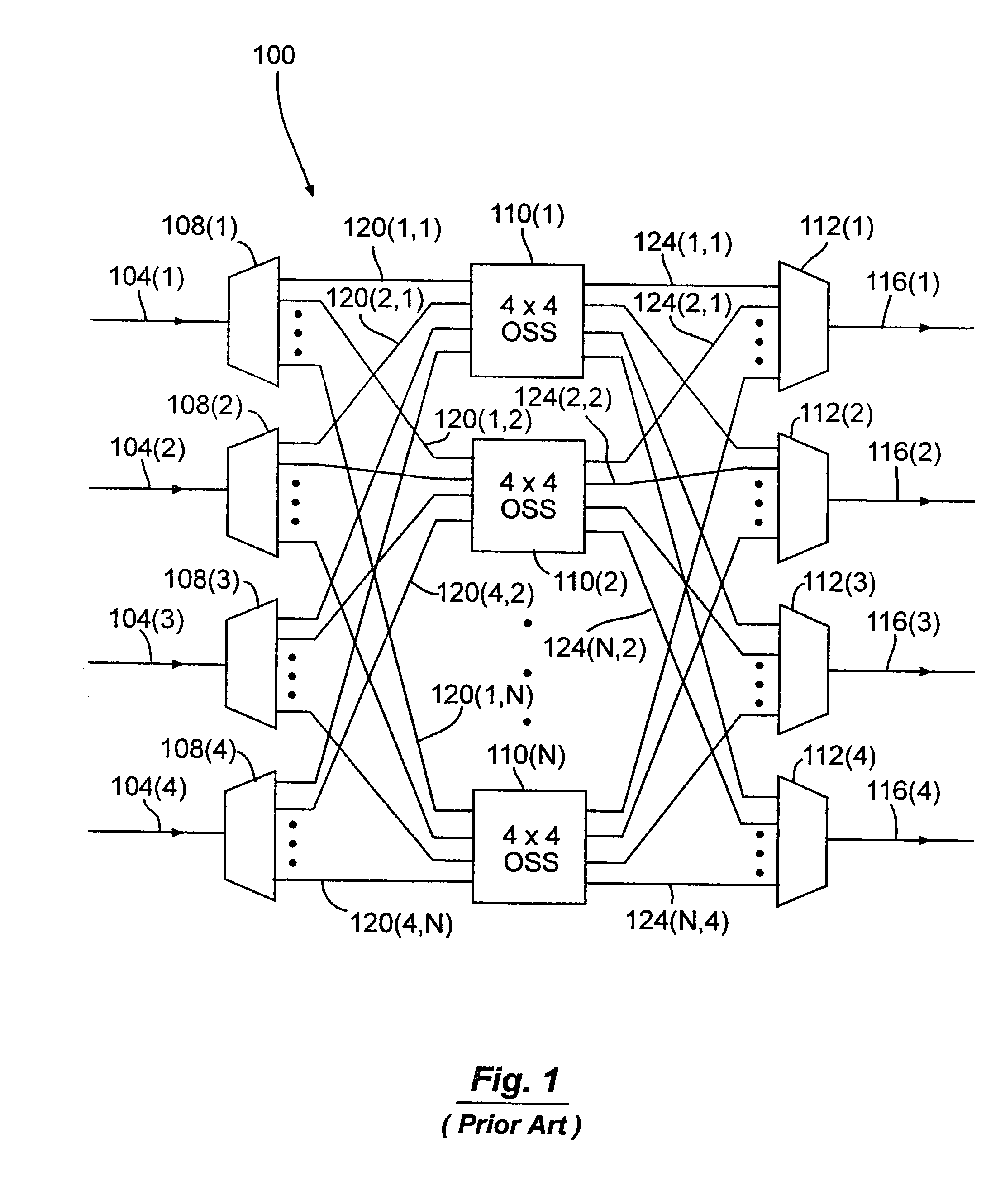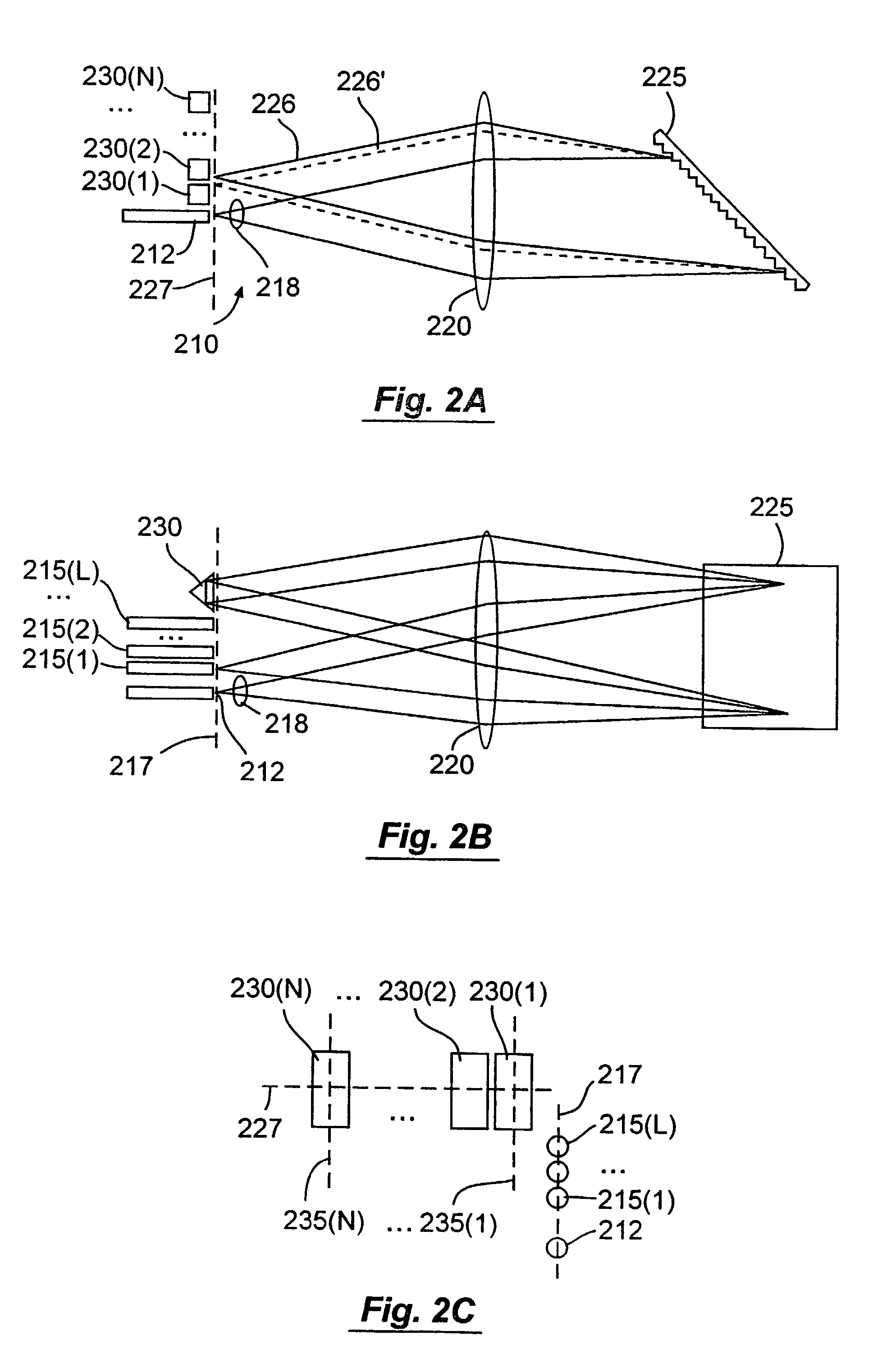Optical wavelength cross connect architectures using wavelength routing elements
a technology of optical wavelength and routing elements, applied in the field of fiberoptic communications, can solve the problems of limited efficiency of an arrangement such as the one shown in fig. 1 and the explosion of global bandwidth demand, and achieve the effect of expanding the cross-connect function
- Summary
- Abstract
- Description
- Claims
- Application Information
AI Technical Summary
Benefits of technology
Problems solved by technology
Method used
Image
Examples
Embodiment Construction
1. Introduction
[0033]The following description sets forth embodiments of optical wavelength cross-connect architectures according to the invention. The general operation of such cross-connect architectures is to receive P input signals at respective input ports and output Q output signals at respective output ports. Each of the input and output signals comprises a plurality of spectral bands, with the cross connect capable of achieving a configuration that results in a desired redistribution of input spectral bands corresponding to equivalent channels among the output signals. Although the signals could each have a continuous spectrum, adjacent segments of which could be considered different spectral bands, it is generally contemplated that the spectrum of the incoming light will have a plurality of spaced bands, denoted as corresponding to channels 1, 2, 3, . . . N. In some instances, the examples provided herein focus on symmetric cross connects in which P=Q, but this is not a req...
PUM
 Login to view more
Login to view more Abstract
Description
Claims
Application Information
 Login to view more
Login to view more - R&D Engineer
- R&D Manager
- IP Professional
- Industry Leading Data Capabilities
- Powerful AI technology
- Patent DNA Extraction
Browse by: Latest US Patents, China's latest patents, Technical Efficacy Thesaurus, Application Domain, Technology Topic.
© 2024 PatSnap. All rights reserved.Legal|Privacy policy|Modern Slavery Act Transparency Statement|Sitemap



